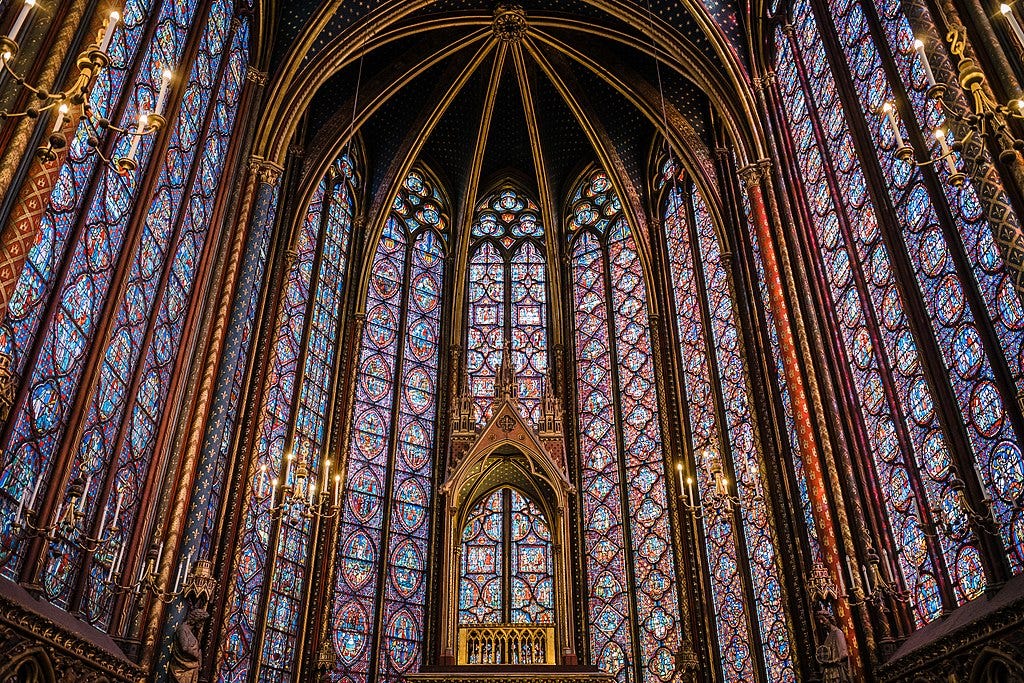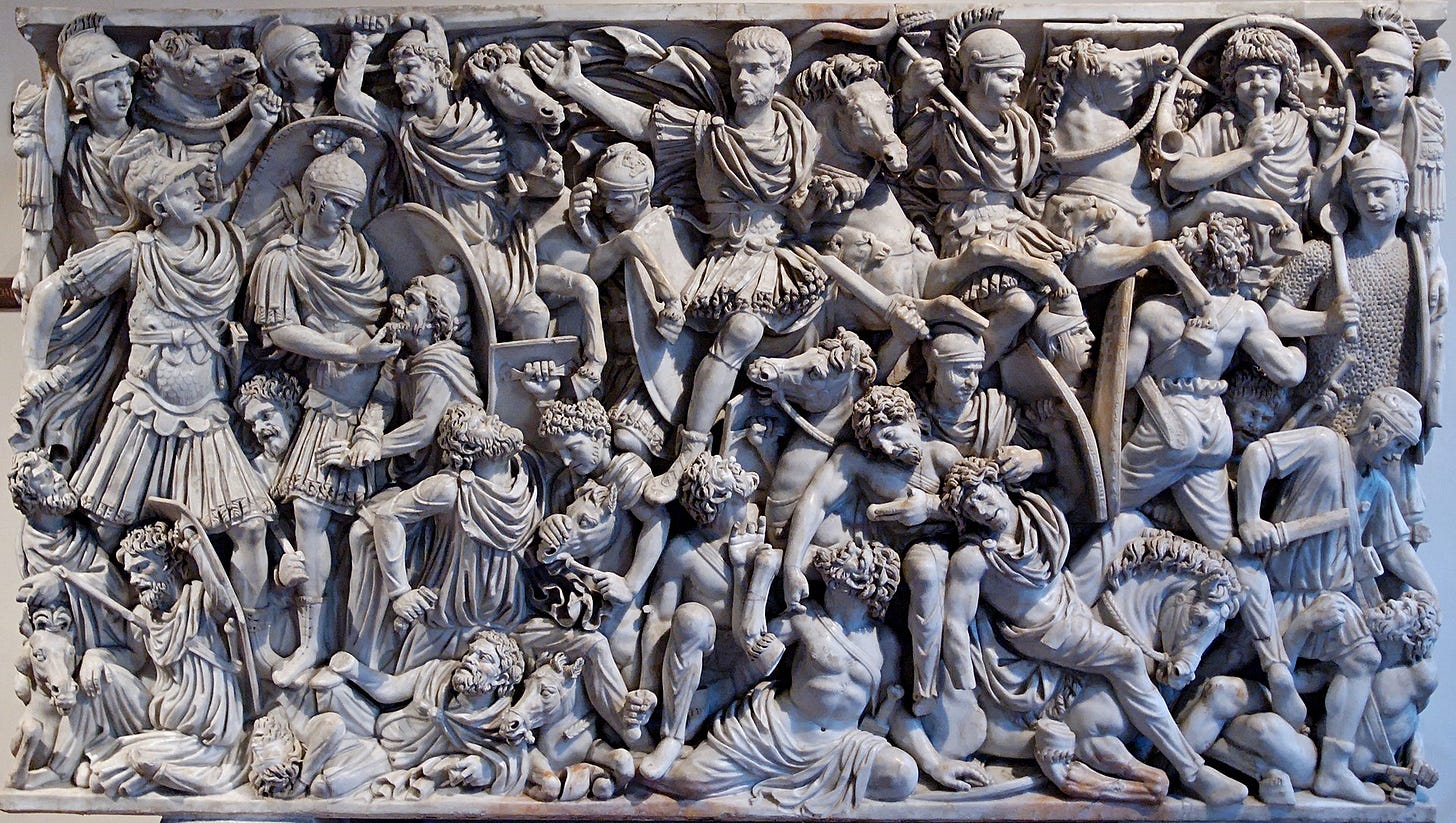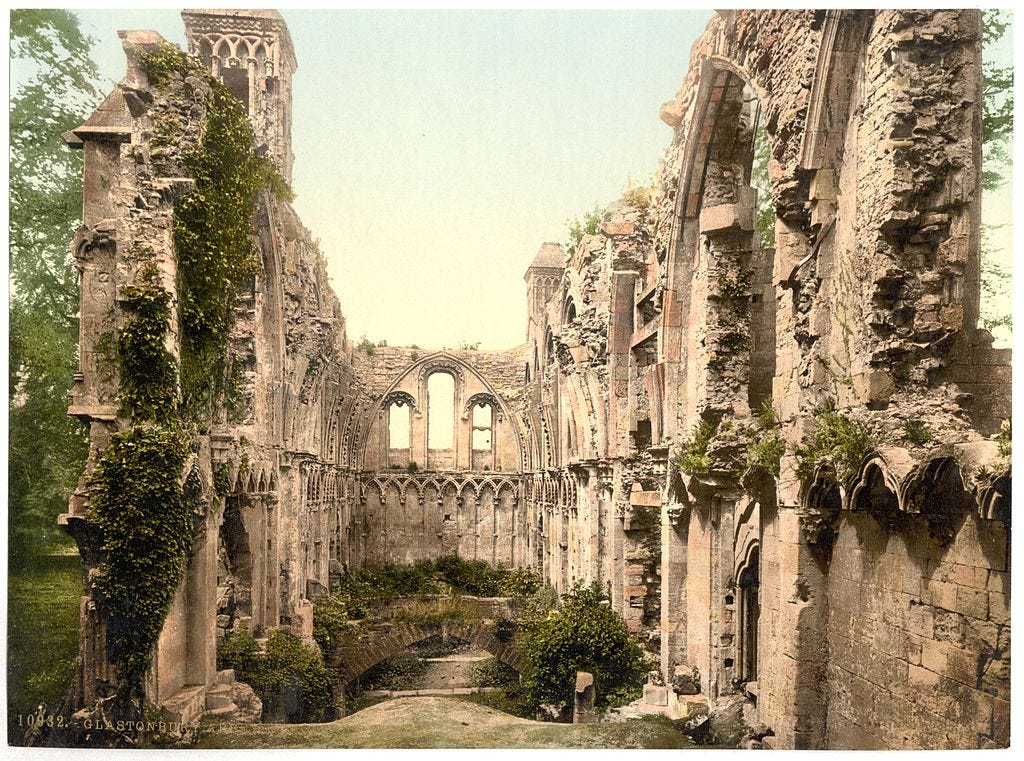From Gothic Invaders to Mall Goths
How an ancient Germanic tribe gave its name to a modern subculture.
Have you ever wondered why the word gothic is used to describe medieval cathedrals, 80’s rock music, genres of literature, and fashion trends? That’s not an accident – the Gothic “ideal” has been a persistent phenomenon for over a thousand years.
In this post, I’ll briefly trace the history of the Gothic from its origin in a barbarian tribe on the fringes of the Roman Empire to a multi-faceted contemporary subculture.
Roughly speaking, we can divide the history of the term Goth into four broad time periods.
Part 1: The Collapse of Ancient Rome (+300 A.D. to 600 A.D.)
The origin of the term gothic ultimately comes from the Gothi, a Germanic tribe that emerged sometime between the 1st and 3rd centuries A.D. By the 3rd century AD, the Goths began to interact more directly with the Roman Empire, both as enemies and as recruits of the Roman army.
The 3rd-century Great Ludovisi sarcophagus depicts a battle between Goths and Romans.
To summarize a long, complicated story, the Goths played a major historical role in the “final days” of the Western Roman Empire and even sacked Rome in 410, the first time the city had been taken by a foreign enemy in almost 800 years.
As you might expect, the term gothic became associated with anti-Roman, anti-Classical ideas and groups of people. The word vandal (also an ancient Germanic tribe that sacked Rome) had a similar history:
Till Goths, and Vandals, a rude Northern race, Did all the matchless Monuments deface
– John Dryden (1694)
While the actual Goths had little impact on today’s Gothic aesthetic, their role as the “enemy of Rome” laid the foundations of its viewpoint as a contrarian, anti-Classical one.
Part 2: The Middle Ages and Renaissance (+1100 to ±1550 A.D.)
Now let’s fast forward about 500 years to the 1100s. Much happened in the meantime, but most importantly was the development of Romanesque art and architecture.
In the late 1100s, the Romanesque slowly developed into the Gothic in northern France, with buildings like Sainte-Chappele and Chartres Cathedral as prime examples. From France, it spread across northern and western Europe.
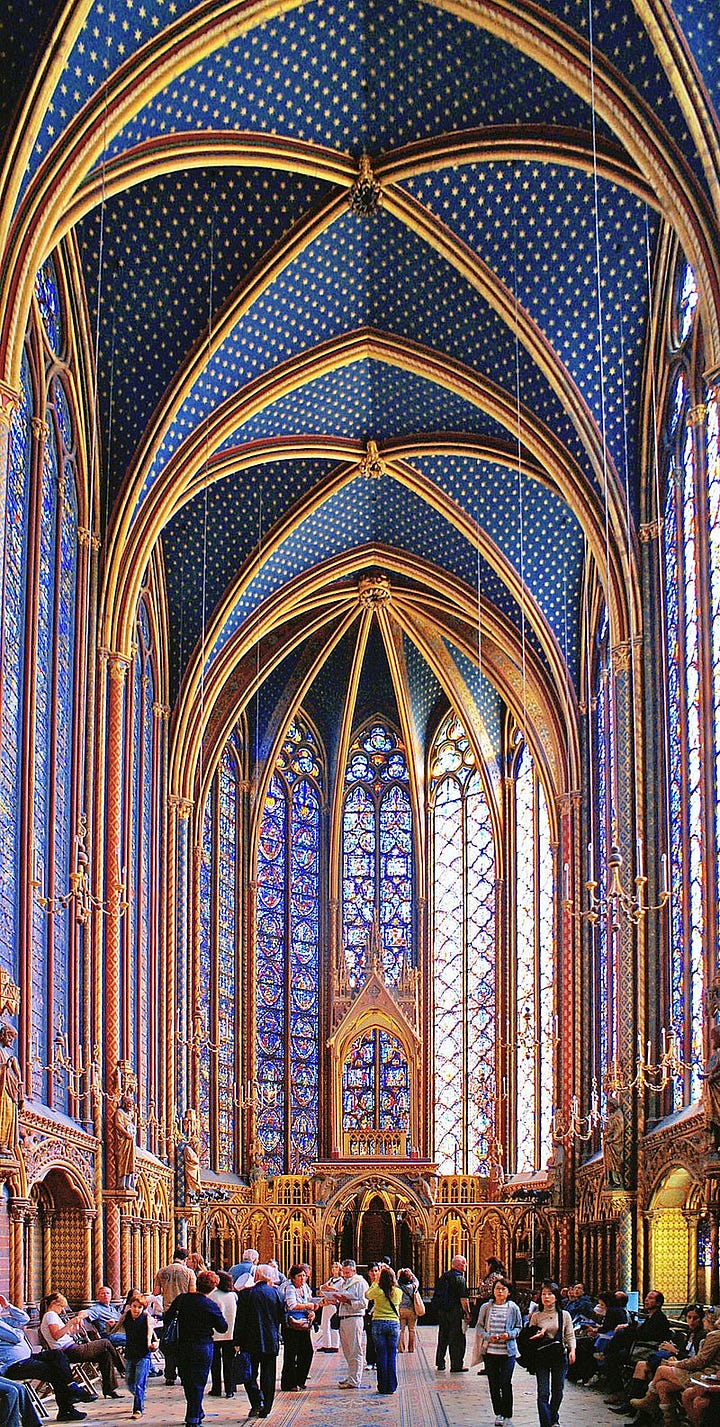
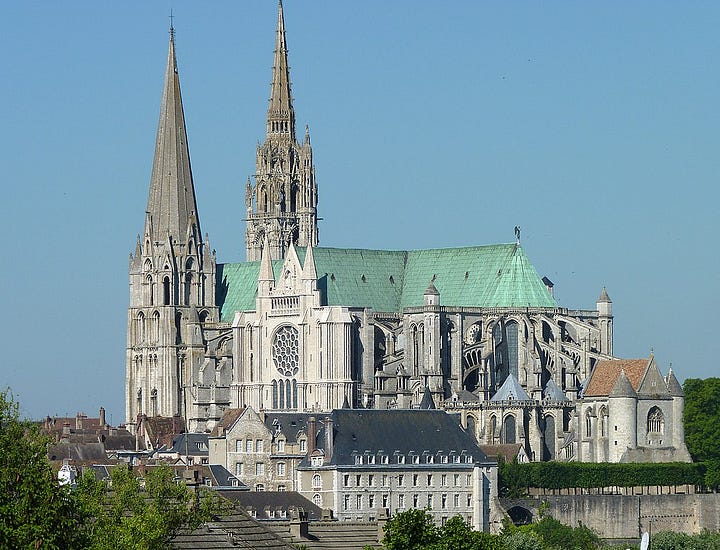
Christianity was key to European society at the time, and so most of the well-known Gothic examples are churches, cathedrals, monasteries, and similar structures. Gothic architecture was known for its stained glass windows, pointed arches, rib vaults, gargoyles, and many other things that you probably associate with the idea of a medieval church today.
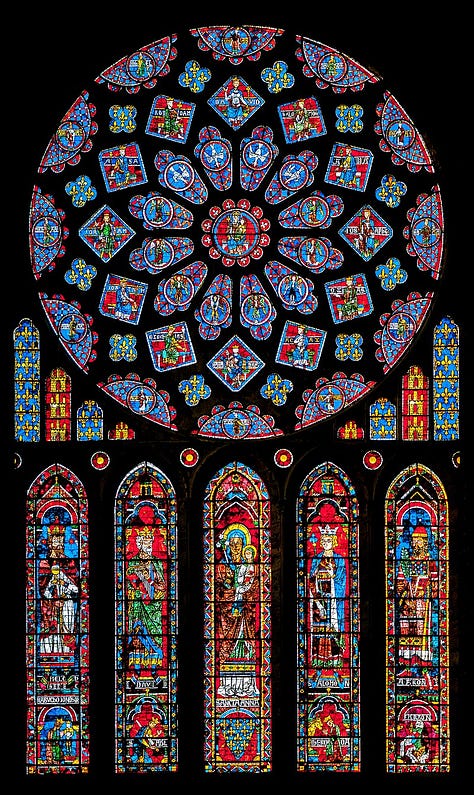
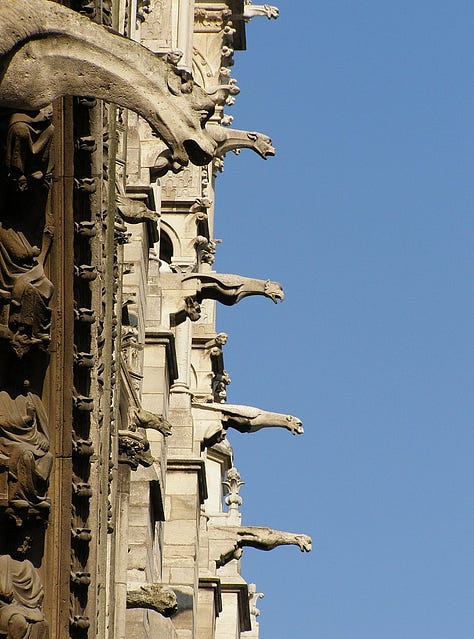
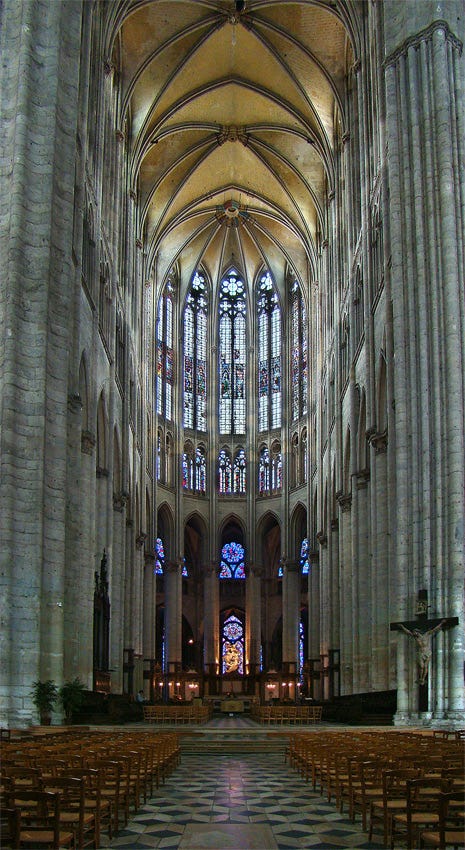
As the Renaissance took off in the 1400s and 1500s, the Gothic style began to lose popularity. This is also when the term gothic began to be used as a negative term to criticize the style. Giorgio Vasari, famous today for his biographies of Italian Renaissance artists, referred to the northern architectural style as “Gothic,” and explicitly blamed it on the actual Goths that had sacked Rome over a thousand years before. Needless to say, Vasari wasn’t a fan of Gothic architecture, calling it “monstrous and barbaric, wholly ignorant of any accepted ideas of sense and order.”
Finally, a key event occurred in England that would have a major impact on Gothic literature a few centuries later. As a part of the wider English Reformation, Henry VIII dissolved the monasteries in England, Wales, and Ireland, aiming to fund military campaigns, increase the Crown’s income, and lessen the power of the Catholic Church.
Glastonberry Abbey, whose last abbot was tortured to death under charges of treason.
As a result, hundreds of Gothic-style monasteries, convents, and related structures were looted, destroyed, repurposed, or merely left neglected. Combined with newer art forms like the murder ballad and the work of Shakespeare (which is full of ghosts, magic, and old castles), this “aesthetic of ruin” laid the seeds of Gothic literature.
Part 3: The Late 18th Century through the 19th Century (±1764 to ±1890s)
Now let’s jump ahead a few centuries to the late 1700s. Just as the Medieval Gothic ideal centered on architecture, the 18th and 19th-century Gothic ideal was primarily focused on literature – at least initially.
The first-ever Gothic novel is considered to be Horace Walpole’s The Castle of Otranto, first published pseudonymously in 1764. Presented as a recently discovered “translation based on a 1529 manuscript written in Naples,” the story itself claimed to be even older, perhaps even going back to the Crusades.
Walpole was inspired to write the story after a nightmare he had in his elaborate and self-constructed Gothic Revival castle, Strawberry Hill House. A kind of 18th-century Hearst Castle, Walpole’s residence was full of antique paintings, ceramics, and other antiquarian items.

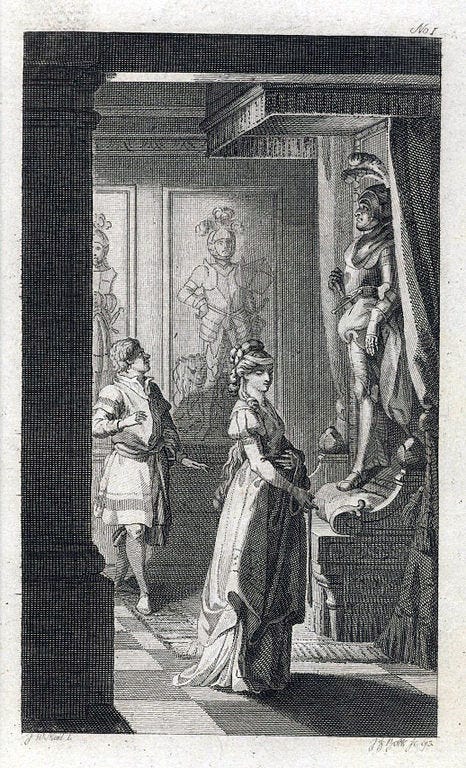
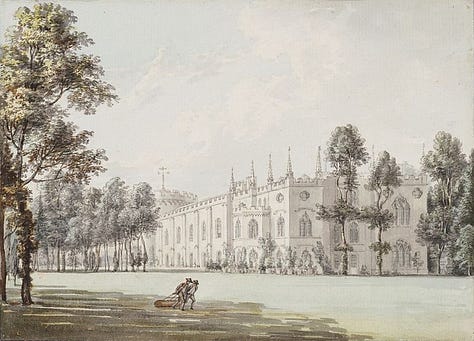
Interestingly, the work was a huge success until Walpole revealed that it wasn’t a translation of a medieval text and that he made the entire story up. Afterwards, critics called it superficial and typical of other romantic novels of the time.
In any case, elements of the The Castle of Otranto would have a huge influence on the aesthetics of the genre, including ghost-haunted castles, ancient prophecies, unexplainable events, and dark, mysterious corridors. It inspired a huge amount of Gothic fiction, so much so that the genre itself became a subject of satire, parodies, and ridicule.
Many of the most famous Gothic symbols came from 19th-century Gothic (and Romantic) literature, including Dracula, Frankenstein, Edgar Allan Poe, the brooding and rebellious Byronic hero, and the seeds of Southern Gothic in the post-slavery American South.
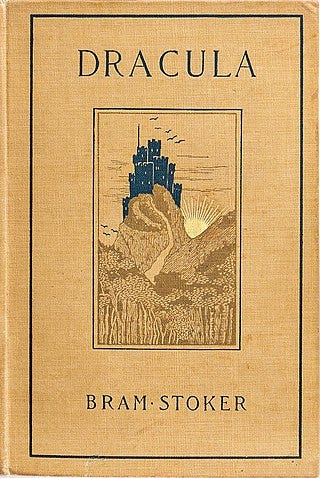
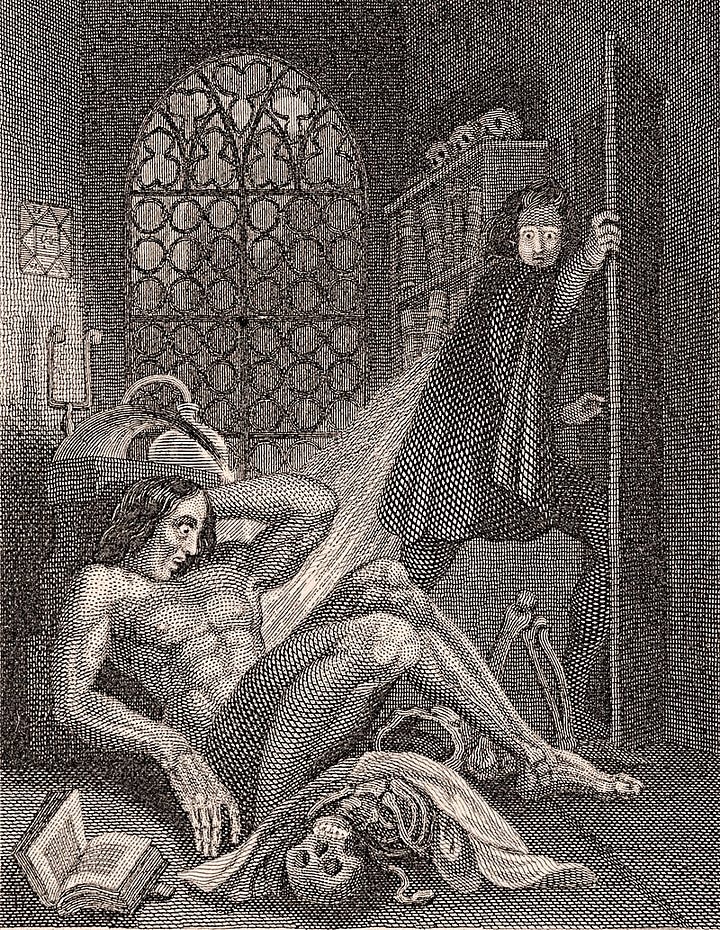

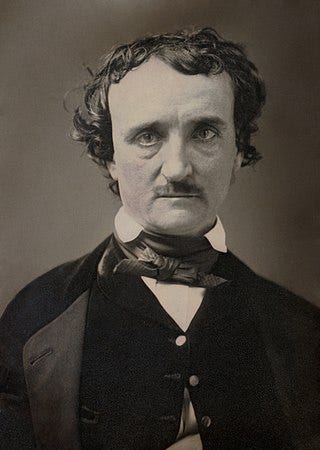
Architecturally, the Gothic would also undergo a revival during the 19th century, especially for more conservative-focused political and religious structures, including the Hungarian Parliament Building, the Palace of Westminster in London, and New York’s St. Patrick’s Cathedral. Many American university campuses were also partially built in the Collegiate Gothic style.
Part 4: 1960s to Today
Finally, we’ve arrived at the present. While the Gothic didn’t disappear entirely after the Victorian Era, it was largely pushed aside by Modernism and related movements for most of the early 20th century.
It was only by the 1960s that the Gothic ideal began to make a resurgence – this time via music. The term gothic rock was first used in 1967 to describe The Doors and The Velvet Underground. By the late 70s and early 80s, bands like Siouxsie and the Banshees, Bauhaus, and The Cure were frequently being referred to as “gothic” by the music press.


During the 80s and early 90s, the genre grew, ultimately playing a major influence on musicians like Nine Inch Nails and Marilyn Manson. Although not gothic rock, Manson’s music and presentation style would be instrumental in popularizing the “mall goth” subculture in the late 90s. Criticized by some as being superficial, overly commercialized, and too focused on fashion, the mall goth aesthetic has nonetheless continued to be influential.

